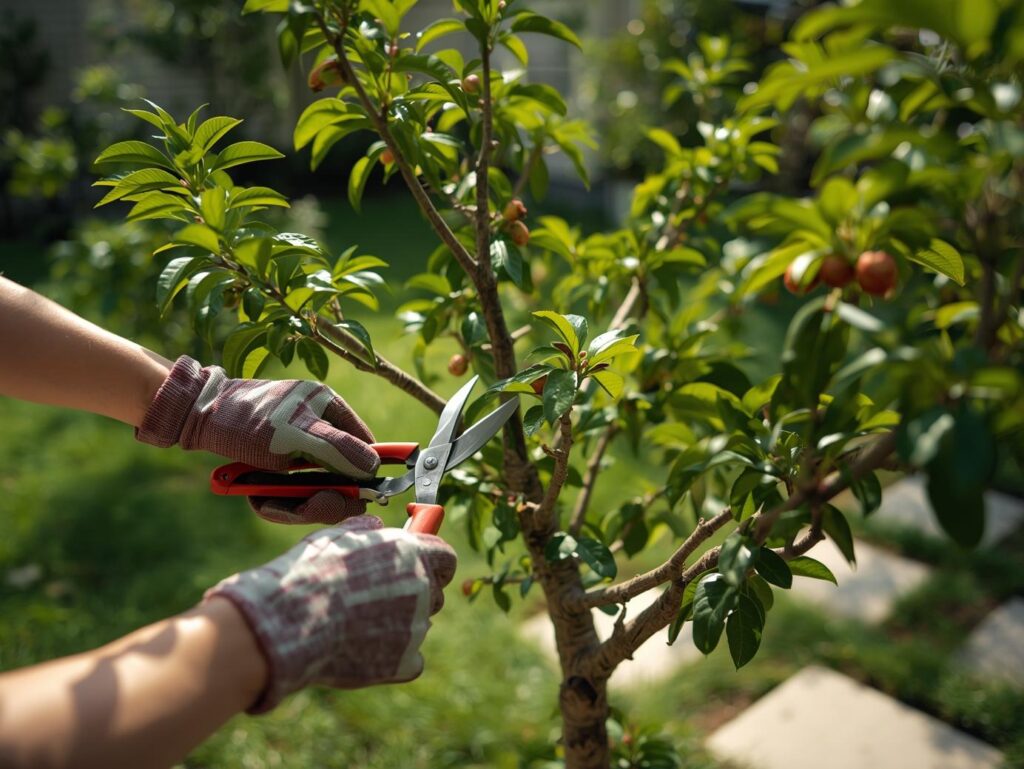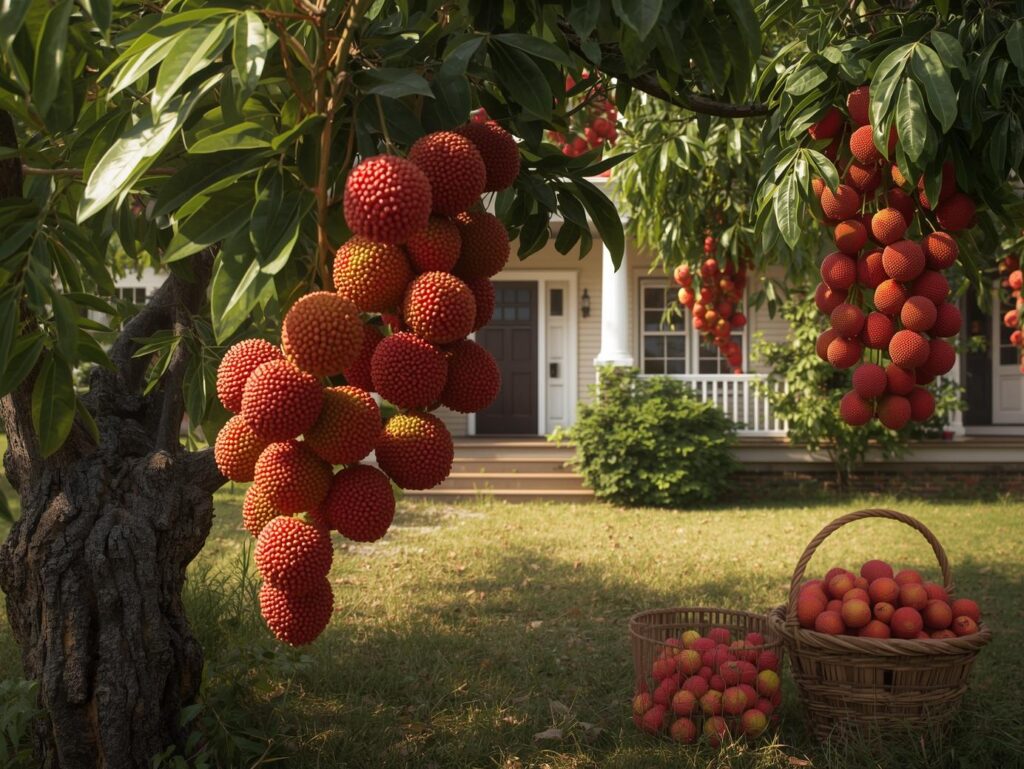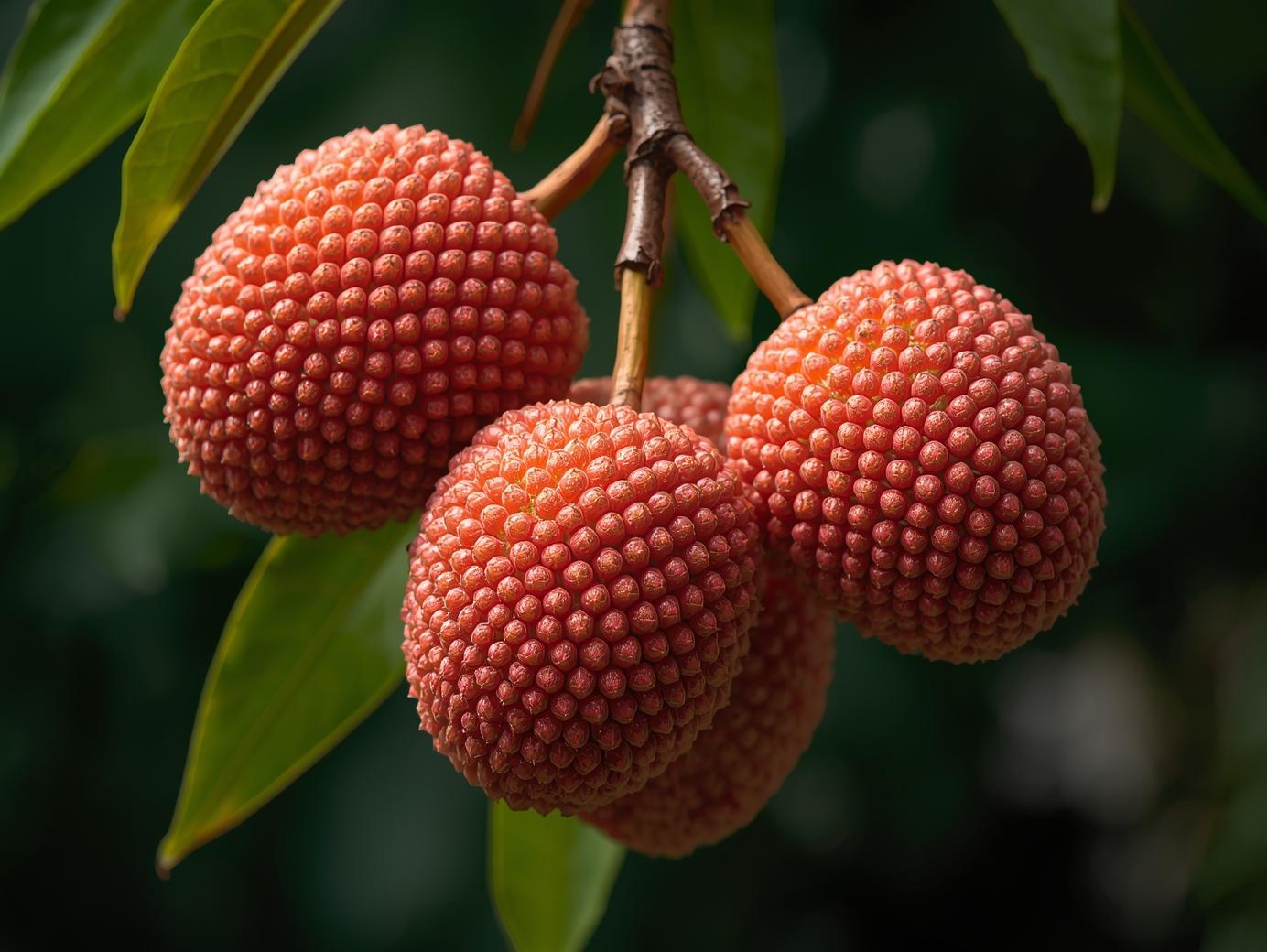Lychee trees bring a touch of tropical beauty and sweetness to home courtyards, offering glossy foliage, fragrant blossoms, and clusters of juicy, red-skinned fruits. Native to Southeast Asia, lychees can successfully grow in parts of the USA with warm, humid climates—particularly in southern Florida, southern California, Texas, and other frost-free regions. With the right soil, sunlight, and care, you can enjoy homegrown lychees that rival those found in tropical orchards. This complete guide covers everything from soil selection to harvest, helping you grow a thriving lychee tree right in your courtyard.
Soil Selection
Lychee trees thrive best in well-drained, fertile soils that are rich in organic matter. The ideal soil type is a slightly acidic loam with a pH between 5.5 and 6.5. Avoid heavy clay soils that retain too much water, as lychees are sensitive to poor drainage, which can lead to root rot. Amending the soil with compost or aged manure before planting improves texture and nutrient content, creating the right balance of moisture retention and aeration. Good soil structure allows roots to spread freely, ensuring healthy and vigorous growth.
For gardeners in the USA, especially those with sandy or alkaline soils, soil preparation is essential before planting lychees. Mixing in organic matter and peat moss helps adjust pH levels and increase fertility. A simple soil test can help identify deficiencies in nutrients or imbalances in pH. Once you have well-balanced, slightly acidic soil, your lychee tree will establish faster, absorb nutrients more efficiently, and develop a stronger resistance to stress and diseases.
Site Preparation
Choosing the right site is critical for growing lychee trees successfully in your courtyard. Lychees require full sun to produce abundant fruit, so select a spot that receives at least eight hours of direct sunlight daily. The tree should also be sheltered from strong winds, which can damage delicate flowers and young fruit. Courtyards that offer some natural protection—such as walls or fences—are ideal environments for maintaining warmth and stability. In areas with occasional frost, planting near a south-facing wall can provide additional heat and protection.
Before planting, clear the site of weeds, rocks, and debris that might compete with or obstruct root growth. Loosen the soil to a depth of at least two feet to allow roots to establish easily. If your courtyard has poor drainage, consider raising the planting area or creating raised beds to prevent water stagnation. Good site preparation not only ensures healthy root development but also enhances airflow and sunlight exposure, both of which are essential for robust tree growth and fruitful harvests.
Planting
The best time to plant lychee trees in most parts of the USA is during spring when the soil is warm and the danger of frost has passed. Dig a hole twice as wide and slightly deeper than the root ball. Gently remove the tree from its container, loosen the roots, and place it in the hole so that the top of the root ball is level with the surrounding soil. Fill in the hole with the amended soil mixture, firming it gently around the base of the tree. Water thoroughly after planting to settle the soil and remove air pockets.
If planting in a container, choose a large pot with excellent drainage holes. Container-grown lychee trees should be placed in sunny spots and watered consistently to prevent the soil from drying out. Avoid fertilizing immediately after planting, as newly planted trees need time to establish roots before taking in concentrated nutrients. Once established, the lychee tree will begin producing new leaves and show steady growth, signaling a healthy adaptation to its new environment.
Watering
Lychee trees require consistent moisture to thrive, particularly during their early growth stages and flowering periods. The soil should be kept evenly moist but not soggy, as overwatering can cause root rot. Deep watering once or twice a week is generally sufficient, allowing moisture to reach the deeper root zones. During hot and dry periods, especially in courtyard settings where heat can reflect off surfaces, more frequent watering may be necessary to prevent drought stress.
To retain moisture and maintain a steady soil temperature, apply a layer of organic mulch around the base of the tree. Mulch also helps suppress weeds and adds nutrients to the soil as it decomposes. However, keep mulch a few inches away from the trunk to avoid rot. Consistent watering practices help lychee trees develop deep, resilient root systems that support strong growth and reliable fruiting. Monitoring soil moisture regularly ensures the perfect balance for optimal health and productivity.
Fertilizing
Proper fertilization plays an essential role in supporting the growth and fruit production of lychee trees. In the first year, focus on establishing a healthy root system by using a balanced, slow-release fertilizer with moderate nitrogen levels. Excess nitrogen can promote lush leaf growth at the expense of flowering and fruiting. From the second year onward, apply a fertilizer rich in potassium and phosphorus to encourage blossom development and fruit quality. Fertilizing three times a year—in spring, summer, and early fall—keeps your tree nourished throughout its growth cycle.
Organic options such as composted manure, fish emulsion, and bone meal provide steady nutrient release while improving soil structure. Conducting an annual soil test will help identify any nutrient deficiencies, allowing you to adjust your feeding schedule accordingly. Always water the tree thoroughly after applying fertilizer to aid nutrient absorption and prevent root burn. With consistent and balanced nutrition, your lychee tree will flourish and produce abundant, flavorful fruits each season.
Pruning & Training
Pruning and training are important for maintaining the health, size, and productivity of lychee trees. The best time to prune is after the fruiting season, typically in late summer or early fall. Remove dead, diseased, or weak branches to improve air circulation and sunlight penetration throughout the canopy. Light pruning also helps control the shape and size of the tree, which is especially important in courtyard gardens where space is limited. Proper pruning encourages the development of strong branches capable of supporting heavy fruit loads.

Training young lychee trees helps establish a balanced structure from the beginning. Select three to four main branches to form the tree’s framework, spacing them evenly around the trunk. As the tree grows, continue shaping it to maintain an open canopy, which enhances light exposure and airflow. Avoid heavy pruning during the growing season, as this can stress the tree and reduce fruit yield. Consistent pruning and training will keep your lychee tree both attractive and highly productive for years to come.
Pest & Disease Control
While lychee trees are relatively hardy, they can still be affected by pests such as aphids, fruit flies, and mites. Regular inspection of leaves and fruit clusters allows early detection and management. Beneficial insects like ladybugs can help control pest populations naturally. If infestations become severe, use horticultural oils or insecticidal soaps that are safe for fruit trees. Avoid applying pesticides during flowering or fruiting stages to protect pollinators and developing fruits.
Common diseases that affect lychee trees include anthracnose, root rot, and leaf spot, especially in humid regions. Good cultural practices such as proper spacing, pruning for airflow, and avoiding overhead watering help minimize disease risks. Always remove fallen leaves and debris from around the tree to prevent fungal buildup. With consistent monitoring and preventive care, you can maintain a healthy lychee tree that continues to thrive and bear fruit in your courtyard garden.
Fruiting & Harvest
Lychee trees typically take three to five years to produce their first fruits after planting. Blossoms appear in spring, followed by small green fruits that gradually turn red or pink as they ripen. The fruiting season in most parts of the USA occurs between late spring and mid-summer, depending on the local climate. Lychees are ready to harvest when their skin is bright red and the flesh inside is translucent and juicy. Gently twist or clip the fruit clusters from the branches to avoid damaging the tree.

Freshly harvested lychees should be consumed soon after picking for the best flavor and texture. They can be stored in the refrigerator for about a week or peeled and frozen for longer preservation. Regular harvesting encourages new growth and helps maintain the tree’s vigor. With proper care, your lychee tree will reward you each year with an abundant harvest of sweet, aromatic fruit that enhances your courtyard’s tropical charm.
